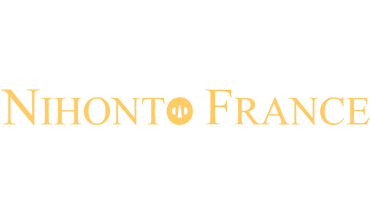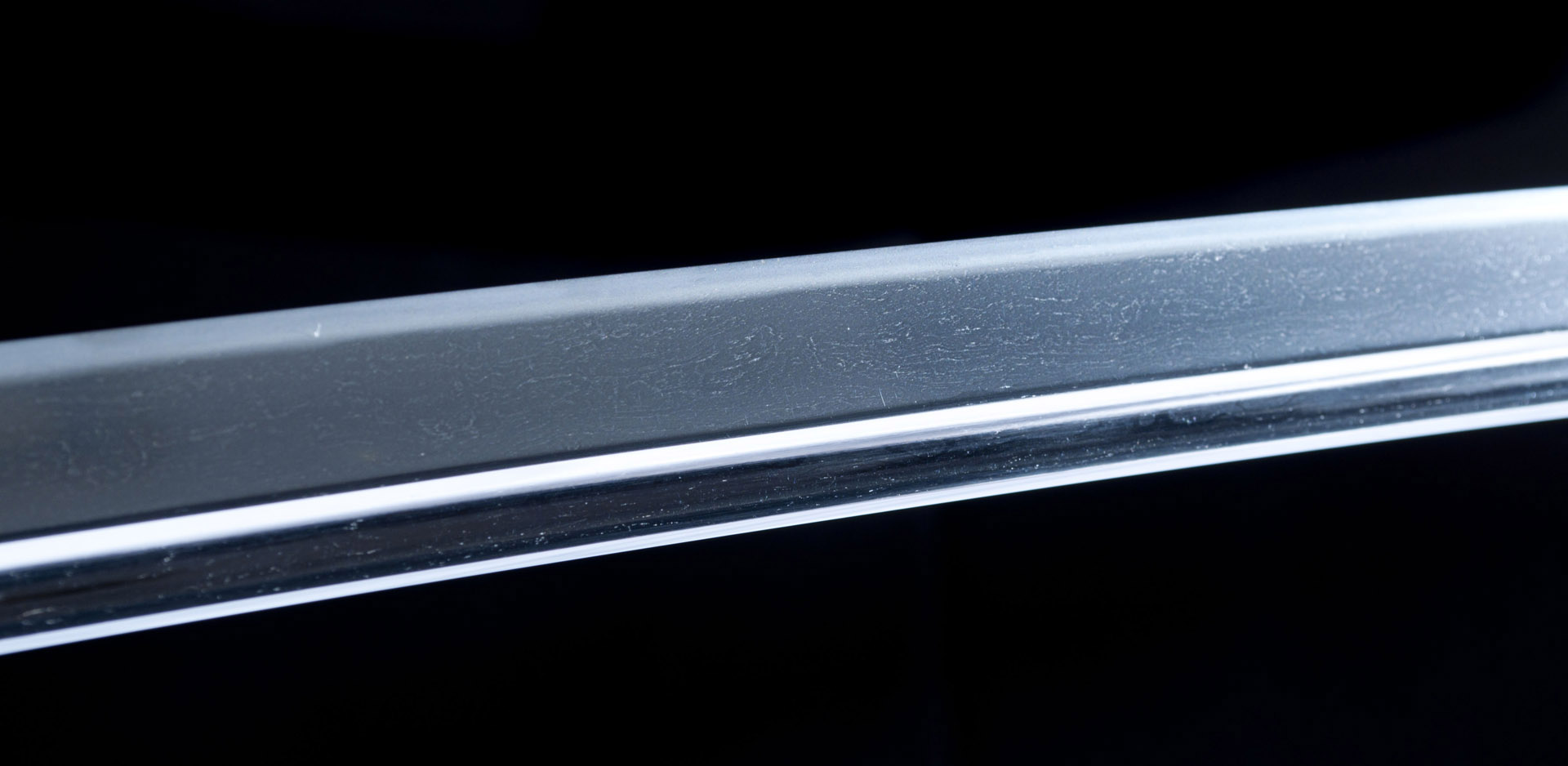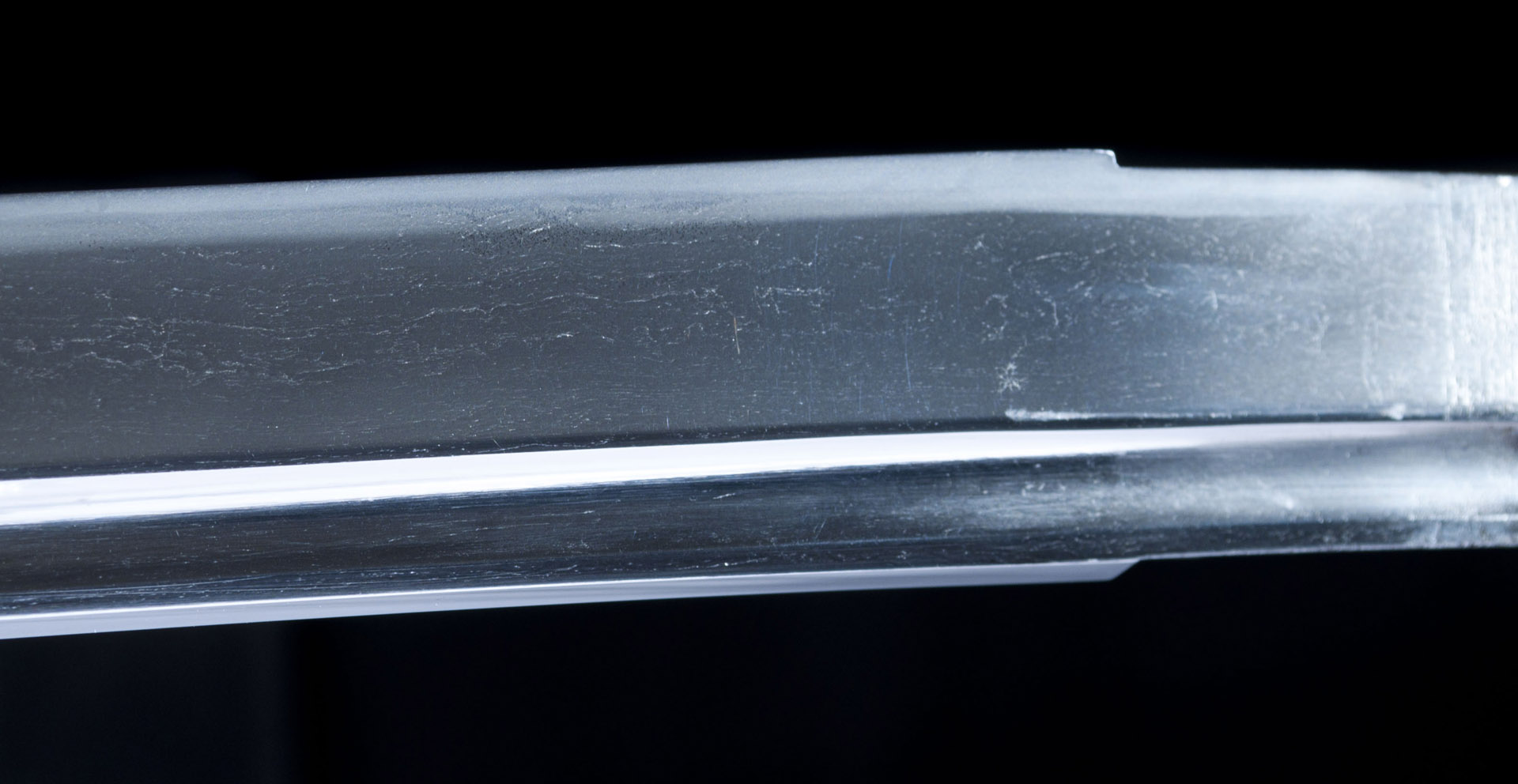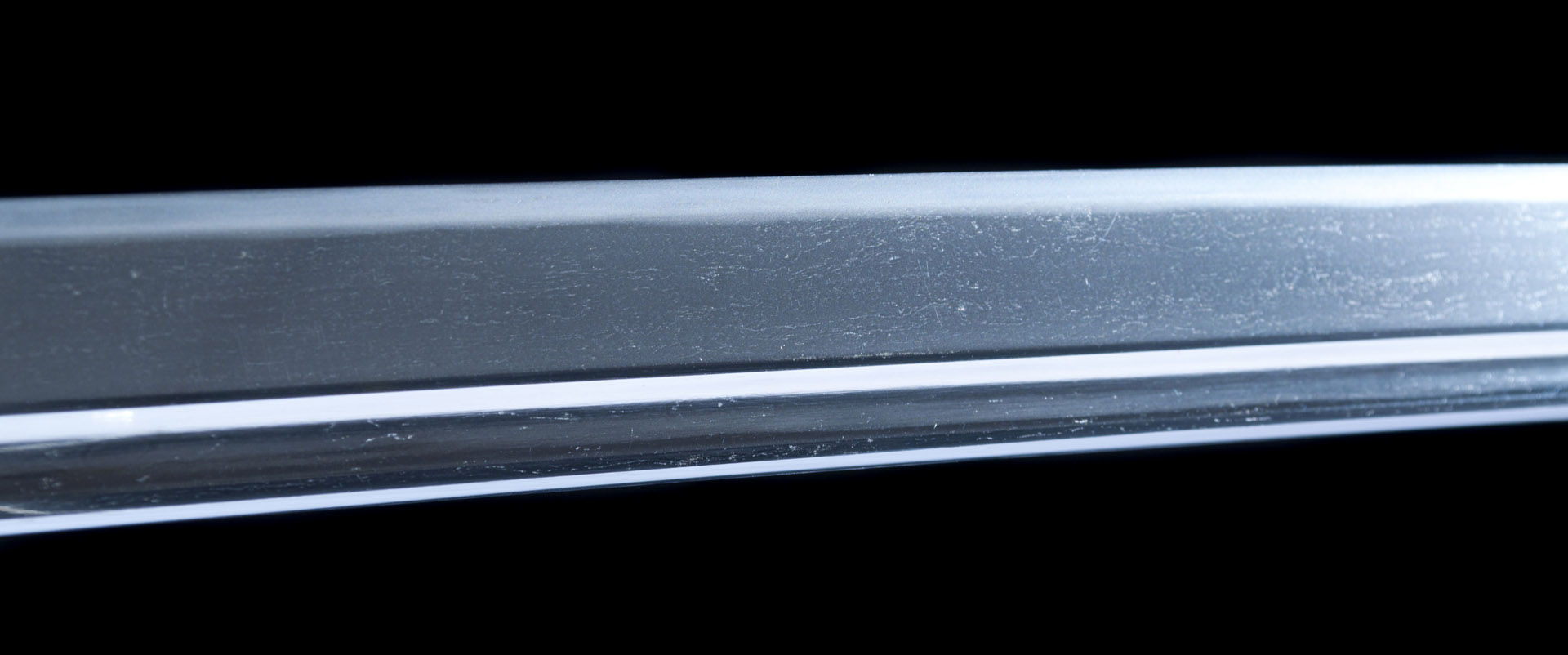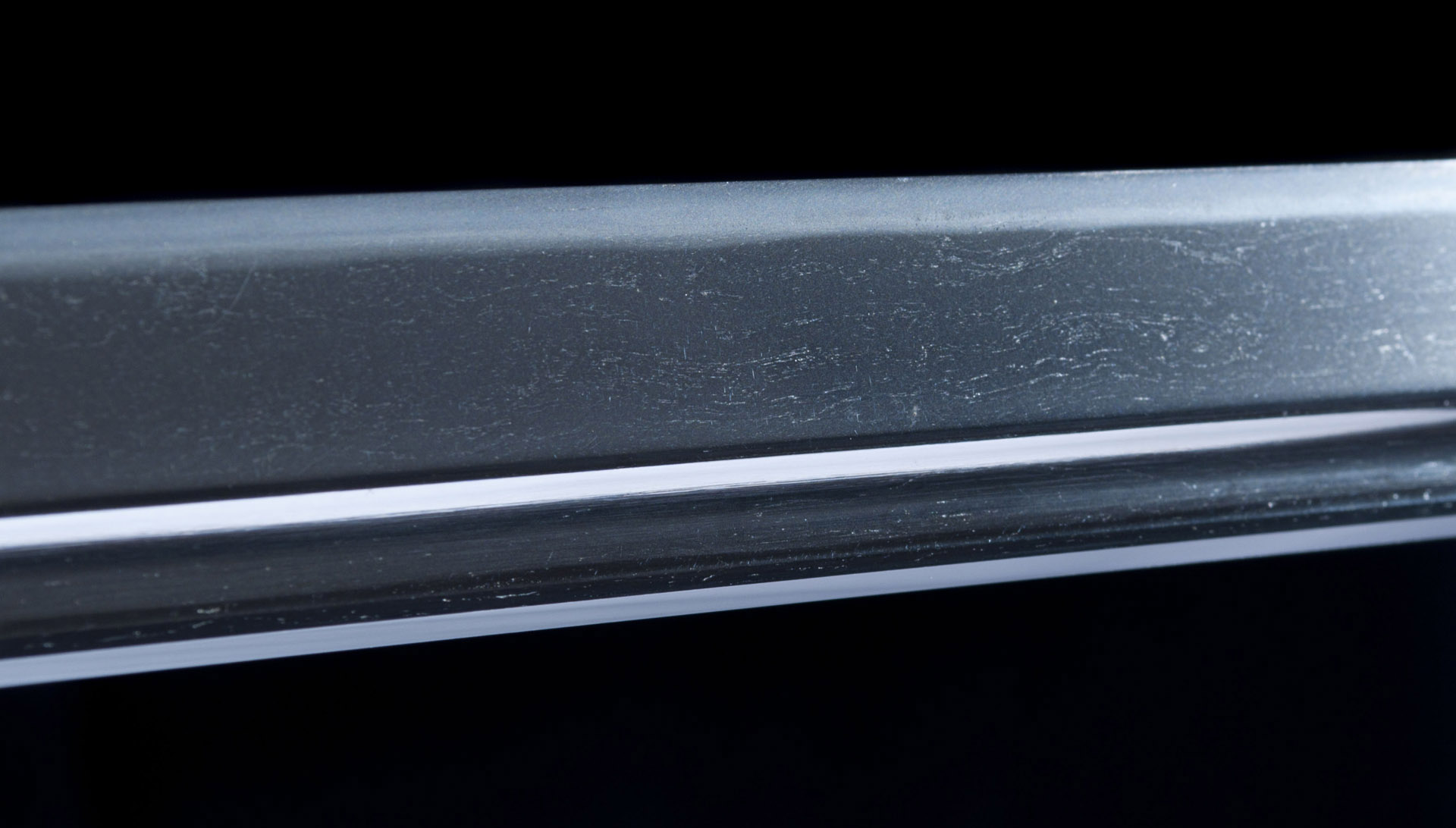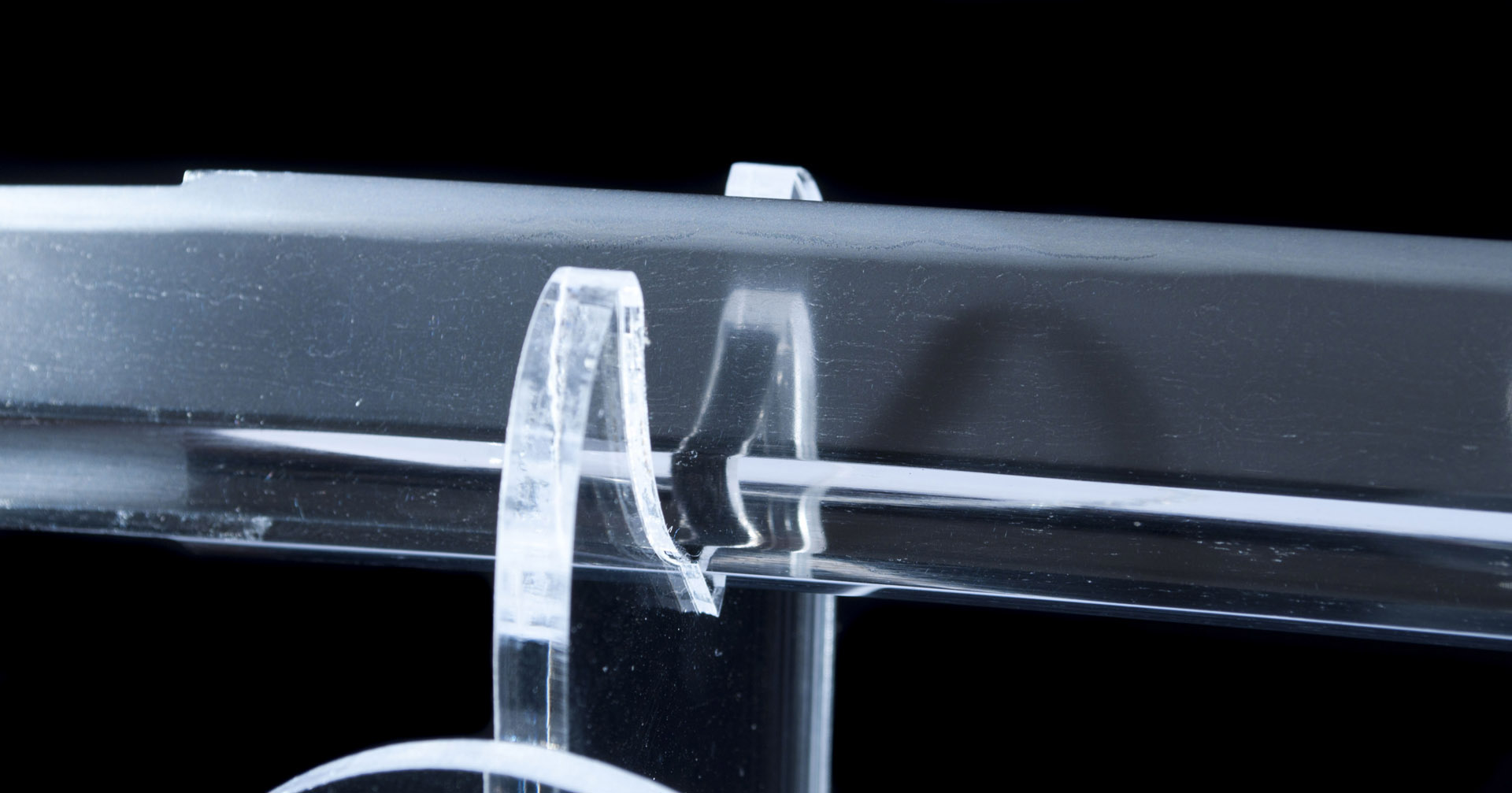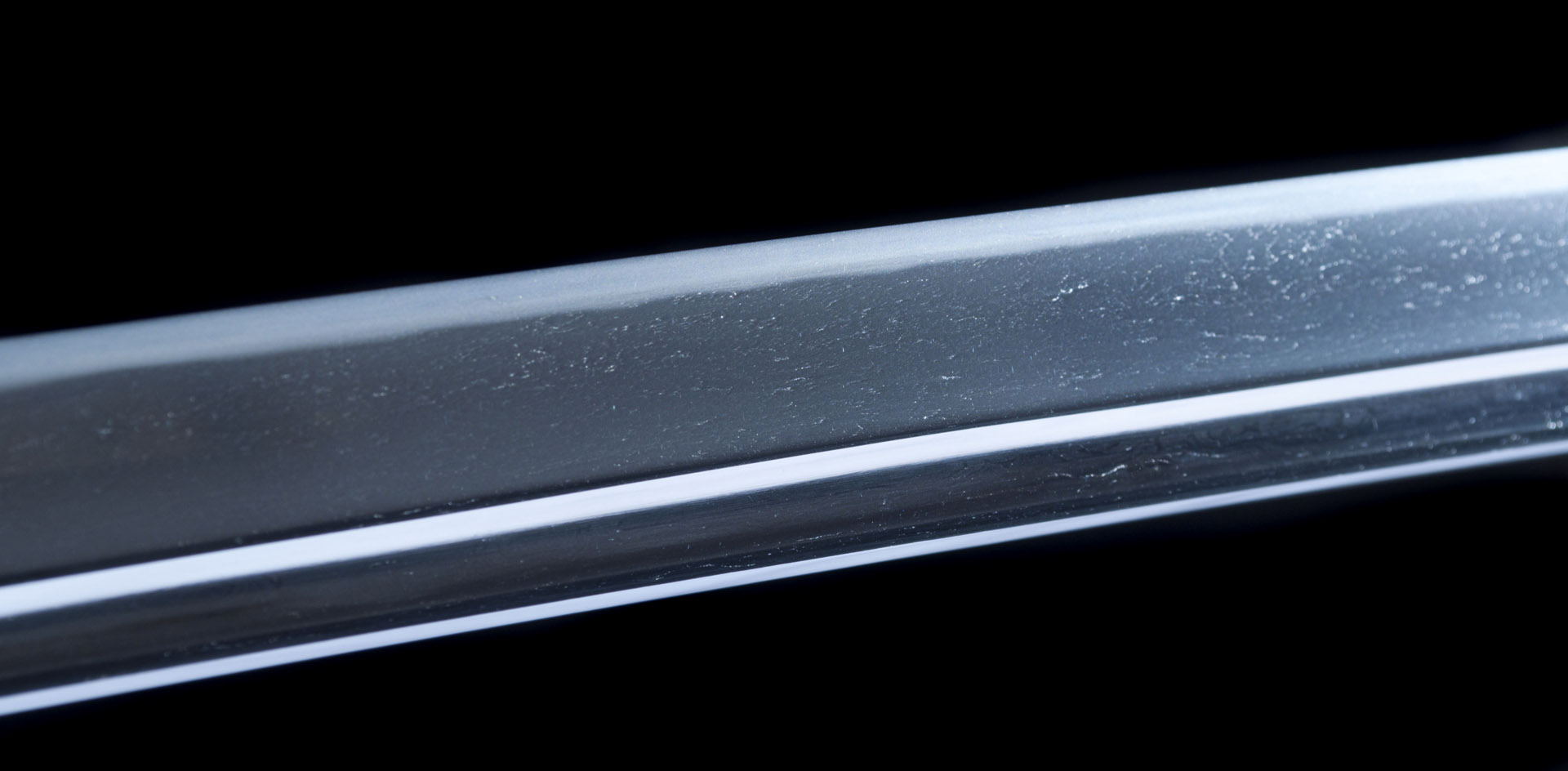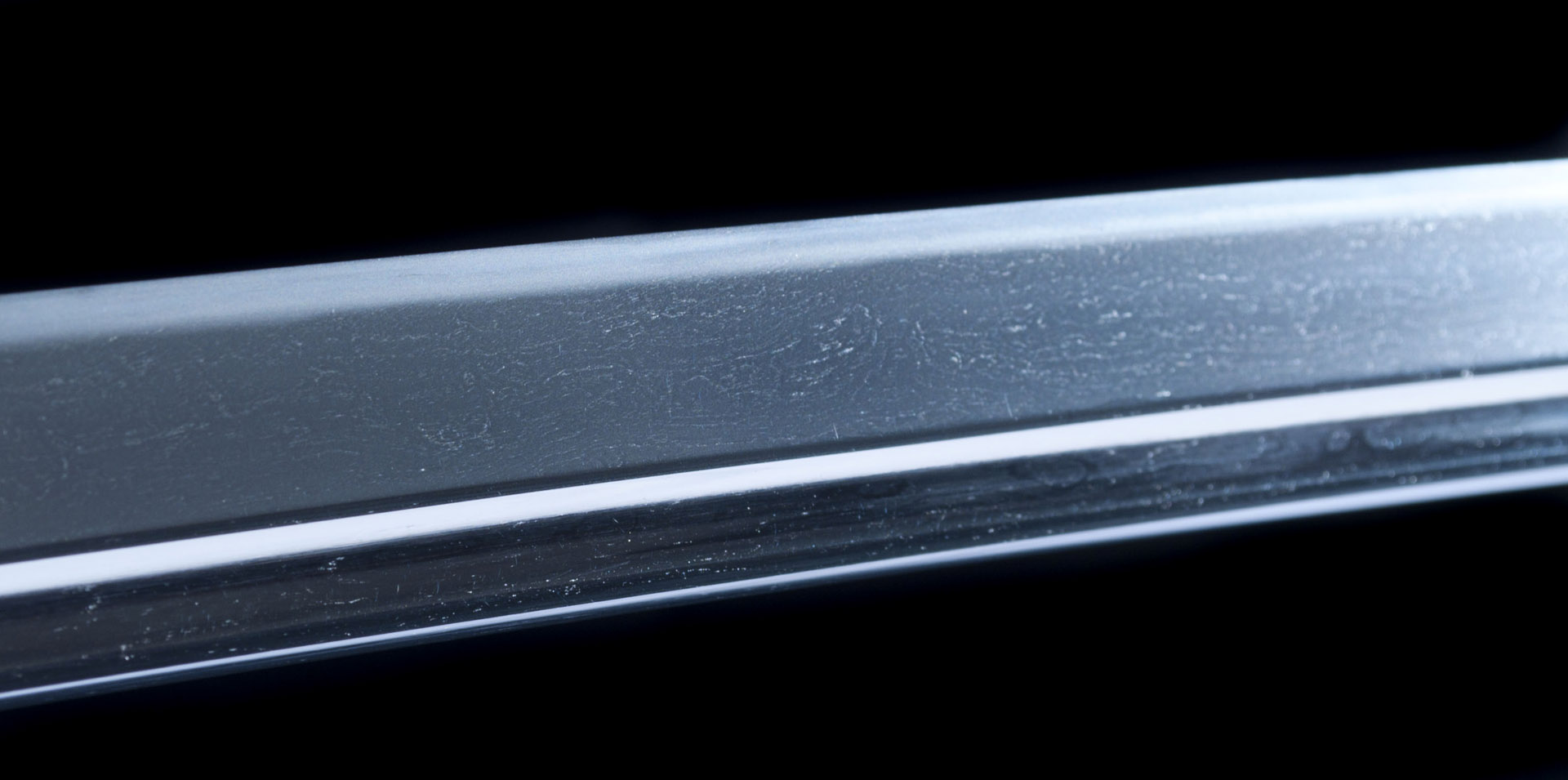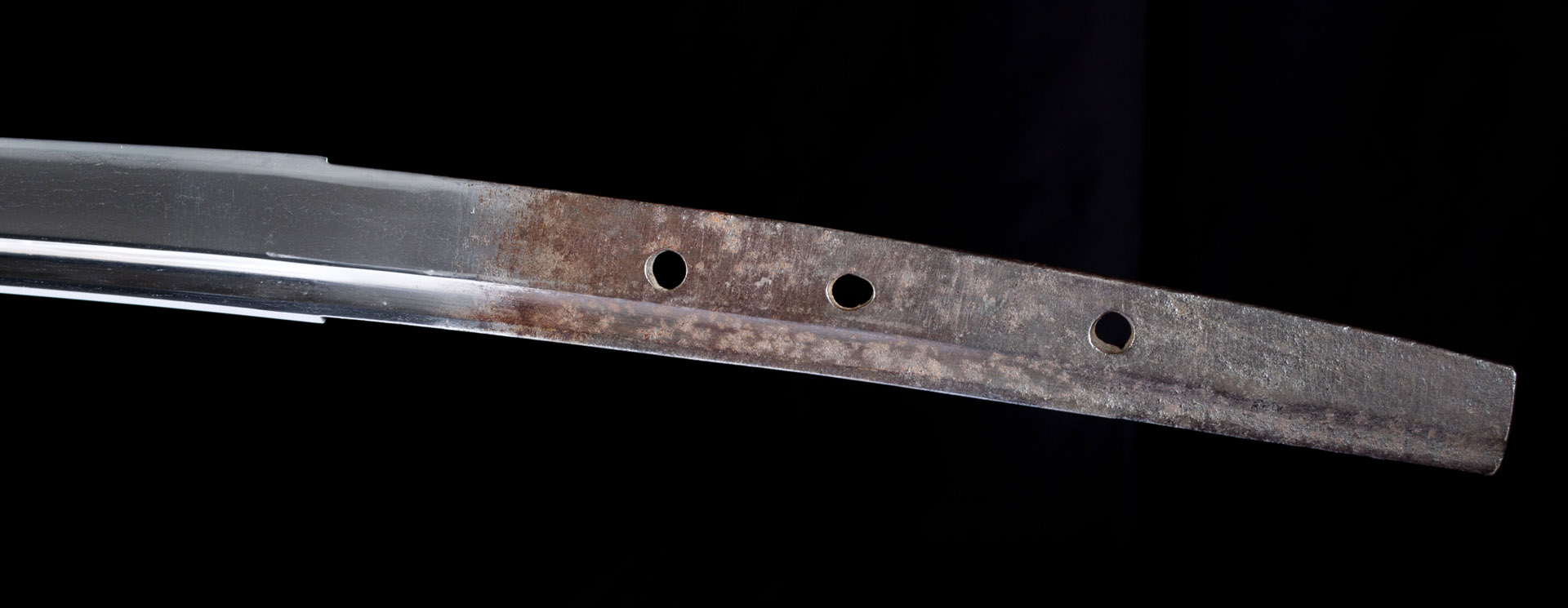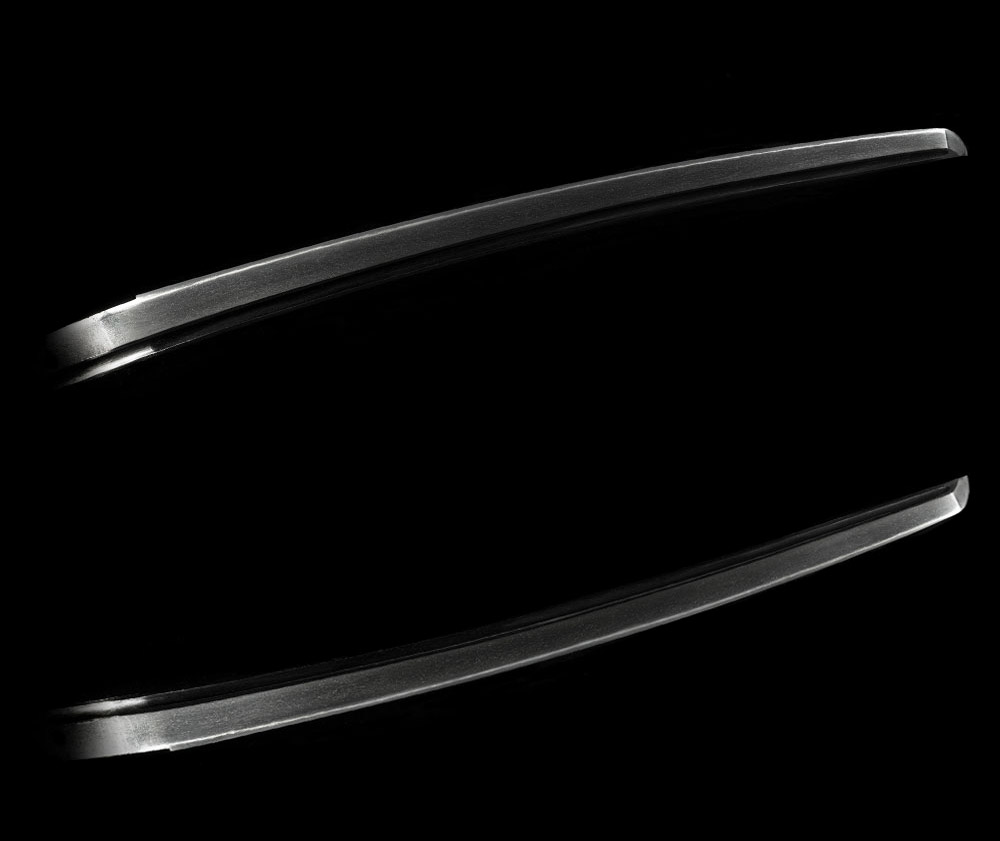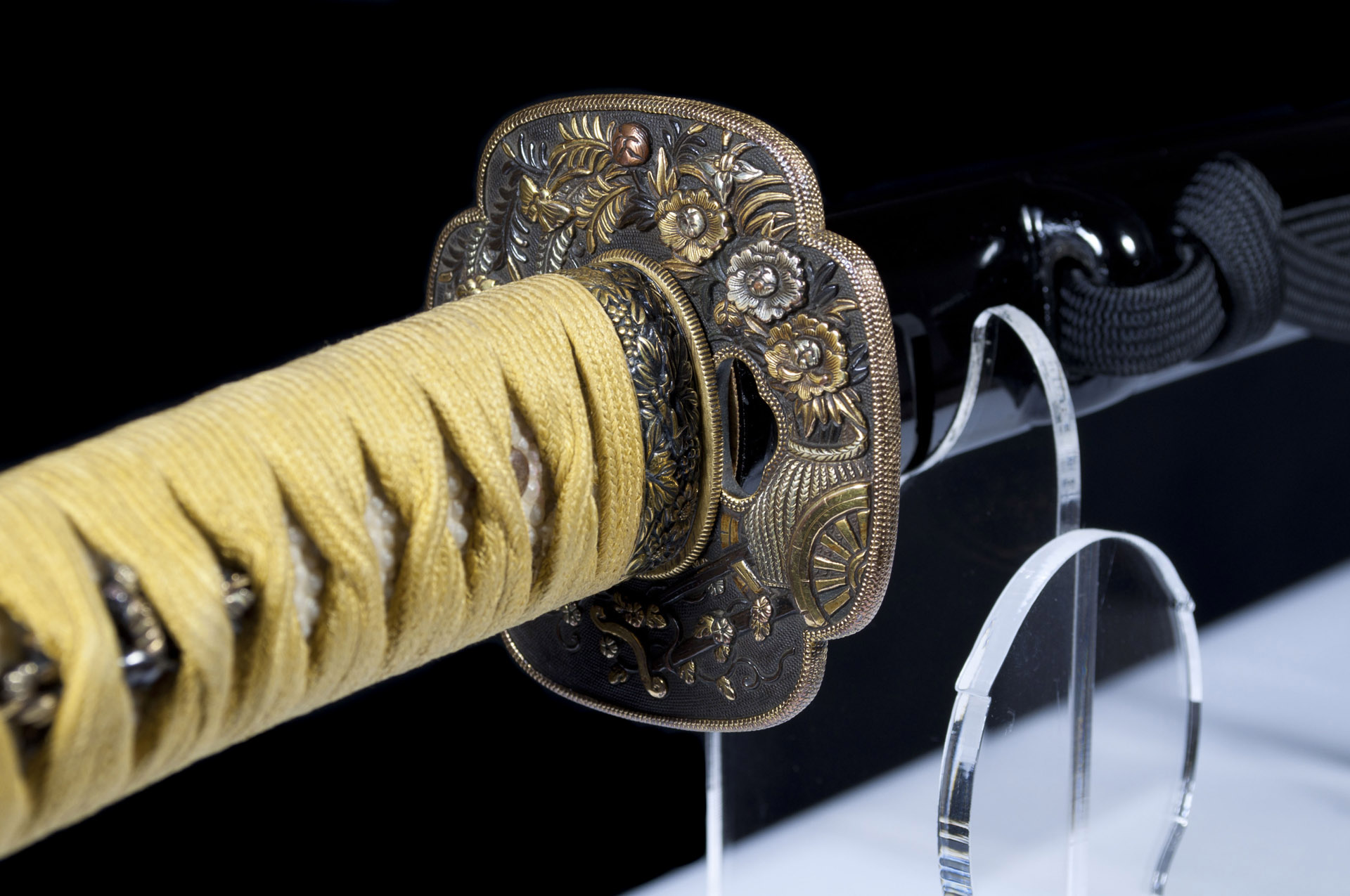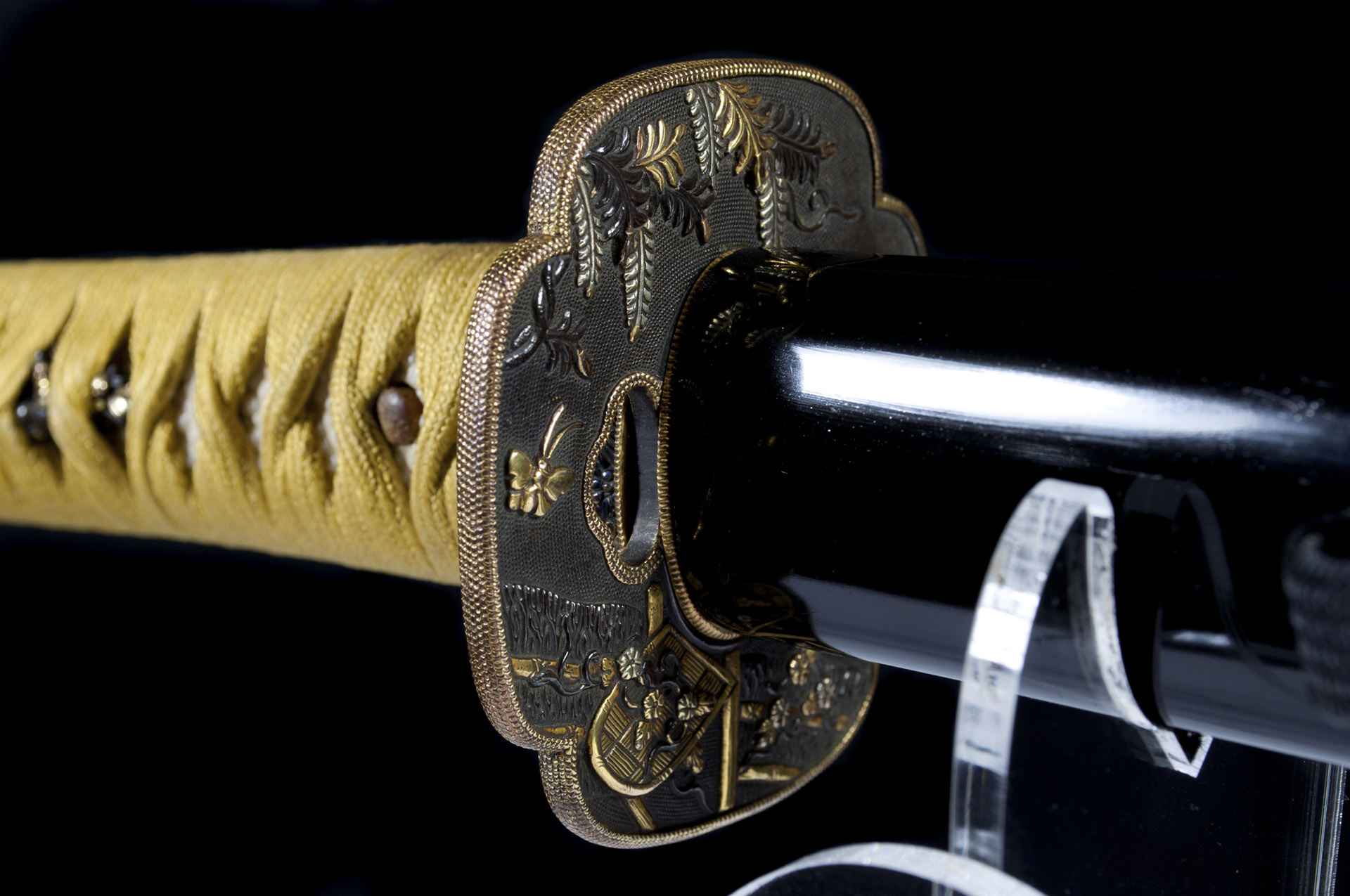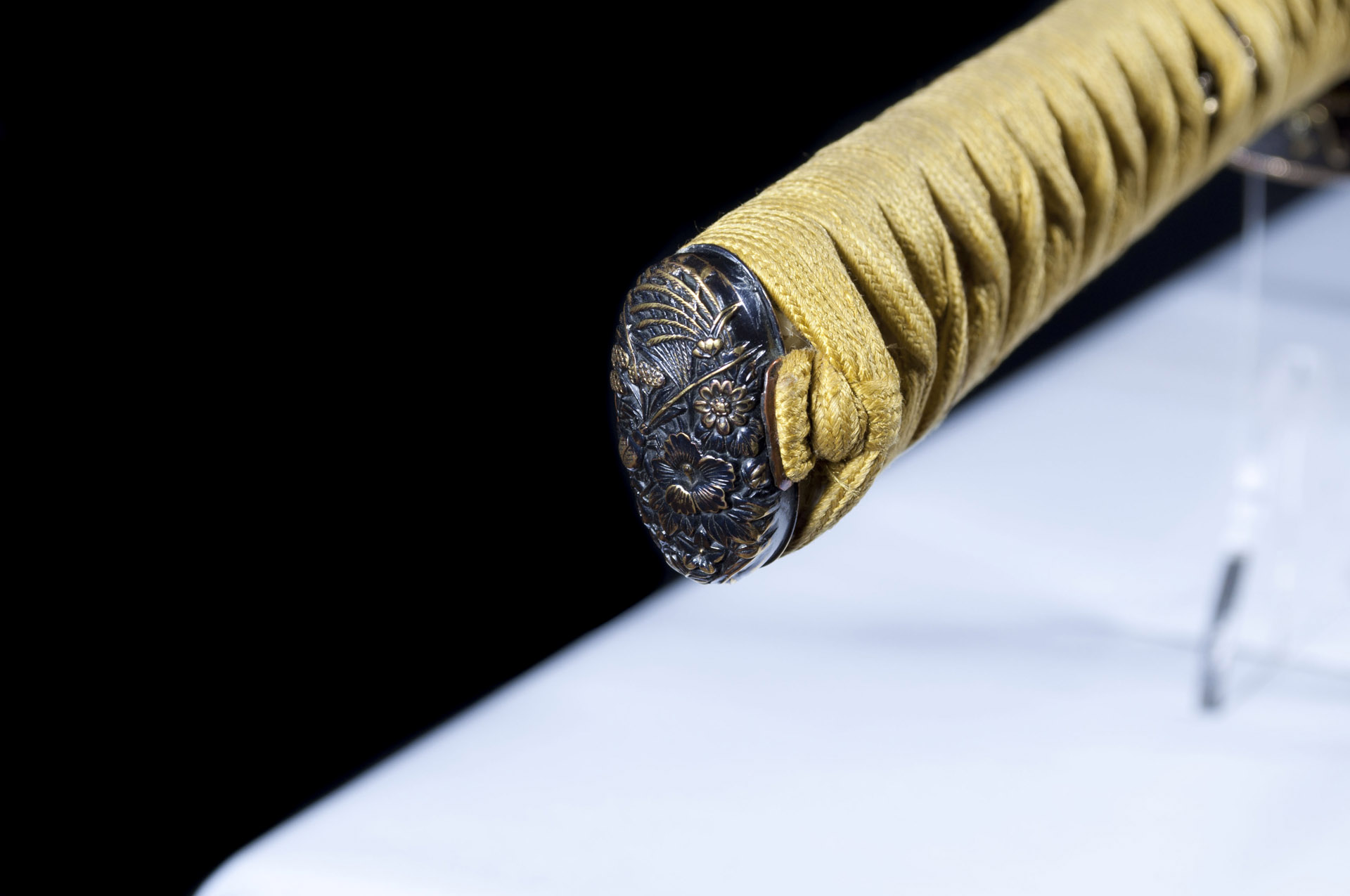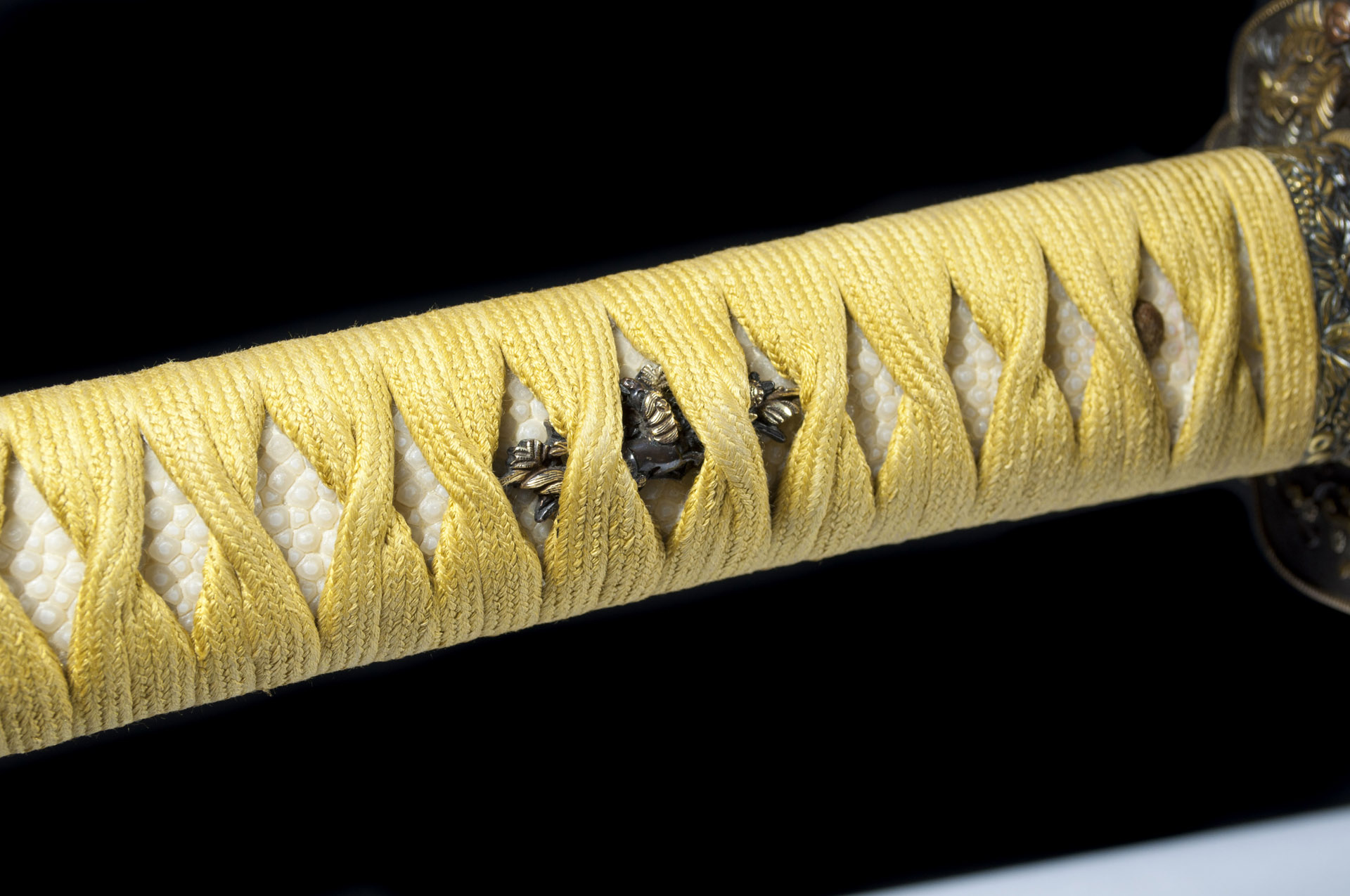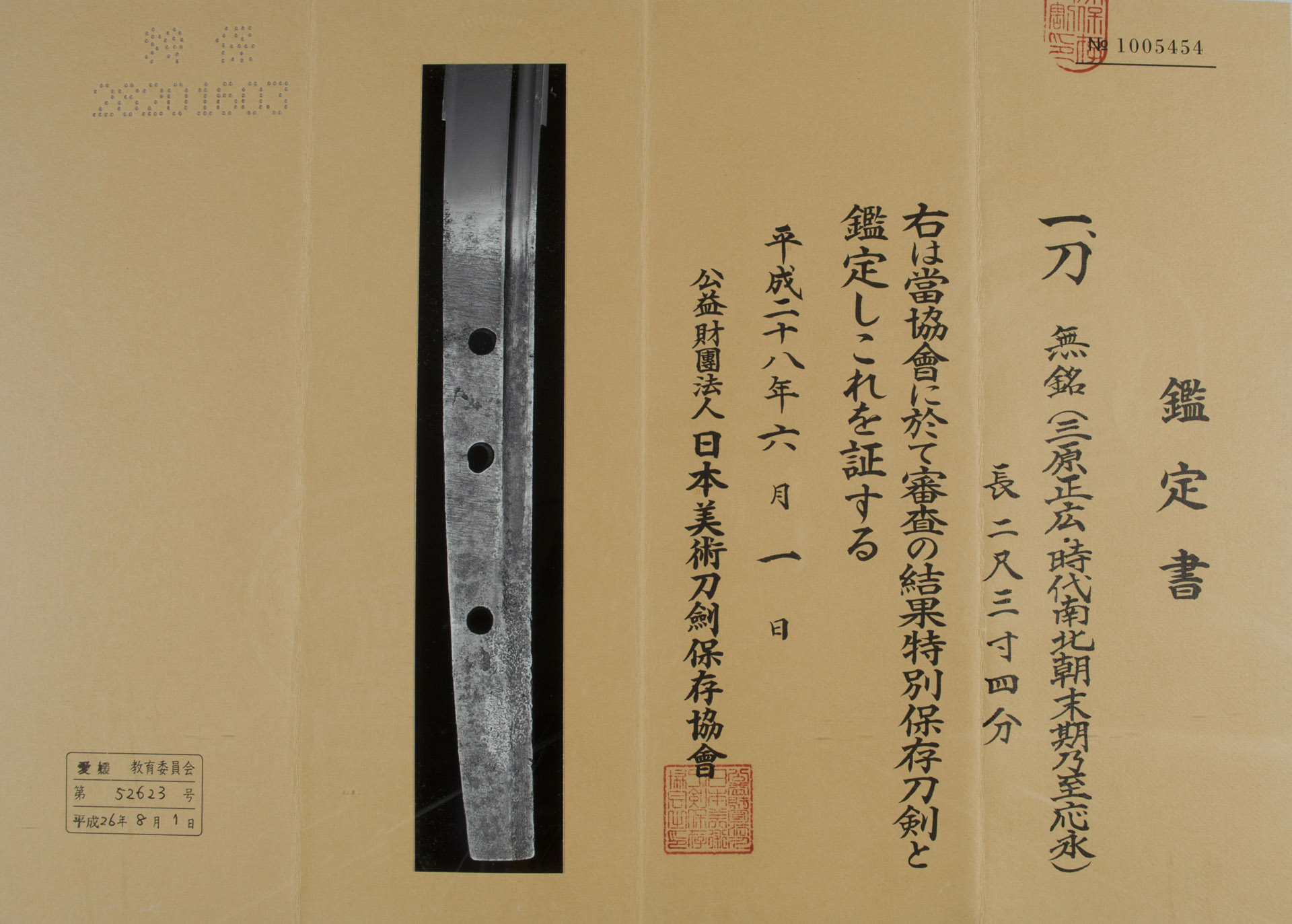Katana Ko Mihara Masahiro 古三原正広
Koto – Nanbokucho Period – 1384
Bingo Province (currently the eastern part of Hiroshima)
Name of the school: (Ko) Mihara
Hamon in chu suguha on base Nioi strewn with some nie, kinsuji and sunagashi, with a luminous nioiguchi.
The jihada is in itame / mokume mixed with an elegant masame reminiscent of the Yamato den style. It is also possible to see a Utsuri shirake.
The boshi is in ko maru, typical of Mihara school.
Horimono Bohi (gorges) on both sides, omote and ura.
Nakago is o-suriage. This blade was therefore much larger originally and Tachi type. Most of the works of this period were shortened during the Edo period to become Katana type and thus be adapted to the appropriate fighting style. Therefore, it is interesting to note that the appraisal made by the NBTHK is particularly accurate since it also mentions the name of the blacksmith and not just the school, which is relatively unusual for old o-suriage blades.
The blade is accompanied by a shirasaya and a beautiful koshirae with kinko Mino school elements that agree on a floral theme.
Dimensions :
Nagasa = 70,7 cm
Sori = 1,0 cm
Motohaba = 3,0 cm
Kasane = 0,66 cm
Fujishiro rank : Chukoto Josaku
NBTHK Tokubetsu Hozon certificate
The Mihara School, whose forge was located at Kokubunji Temple in Bingo Province, was founded by Uemonnojô Masaiye at the end of the Kamakura period. It is divided into three distinct periods: Until the Oei era (1394), the work of this school is named « ko Mihara », « Chû Mihara » from the Oei era (1394) to Eikyo (1429) and « Sue Mihara » for those forged later until the Edo period.
Masahiro was the son of Masaiye, also called Saemonnojô just like his father. They were both the most representative blacksmiths of this school.
In his book, Fujishiro even thinks that this school is probably much older. He tells us that a Meikan article talks about a first generation of Masaiye around Tenpyo (729). This is very interesting because Mihara Masaiye would be at the origin of the rebirth of an old lost tradition of making swords …
It is also commonly accepted that Mihara School was influenced by Yamato and Aoe. We can see very similar characteristics. It has also kept a very conservative style throughout its history.
The works in ko-Mihara are reputed to be of high quality and historically important, so much so that a significant number of them, mainly Mumei, were certified Juyo Token by the NBTHK. Irrefutable proof that this school occupies a place of choice in the history of the Japanese sword.
Sold
